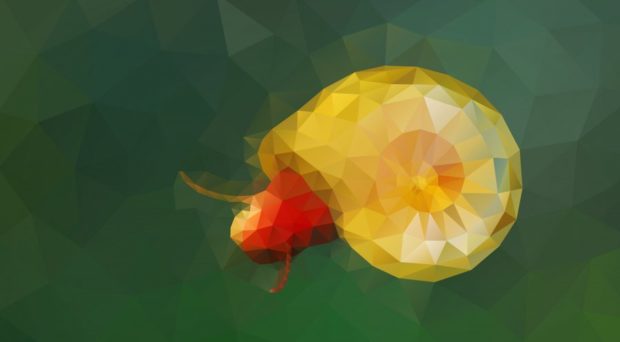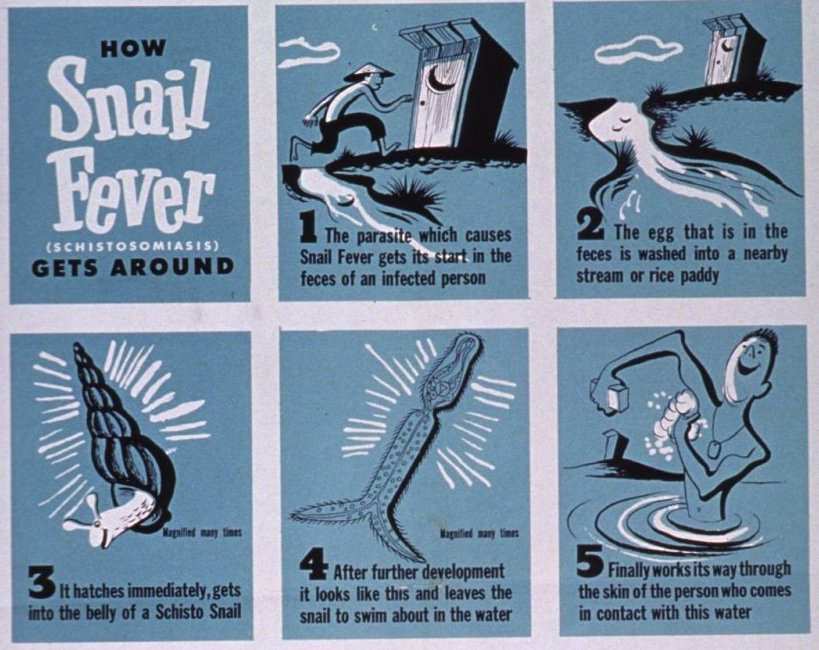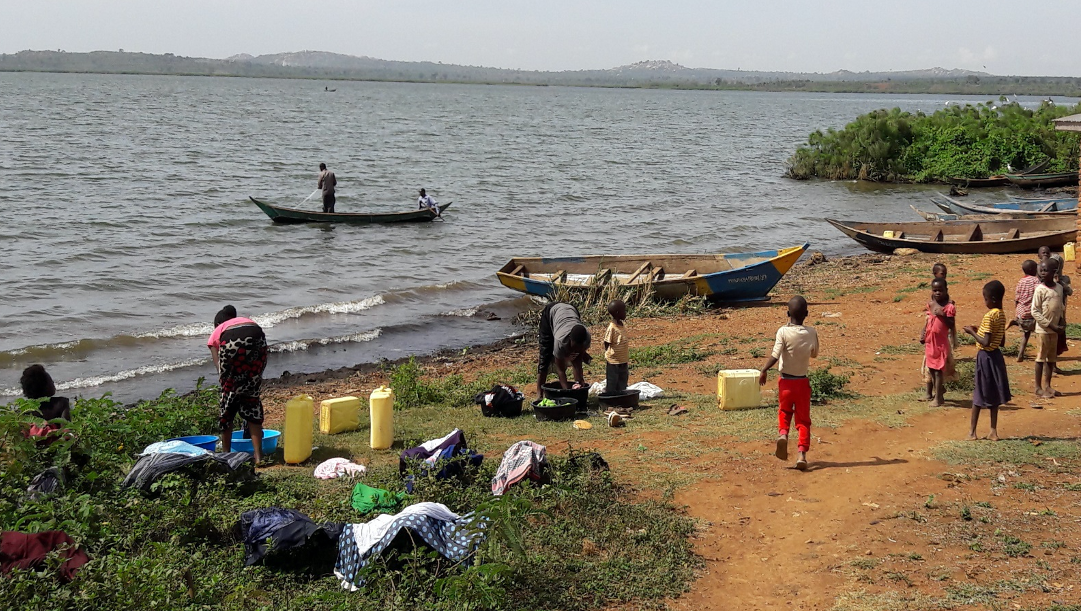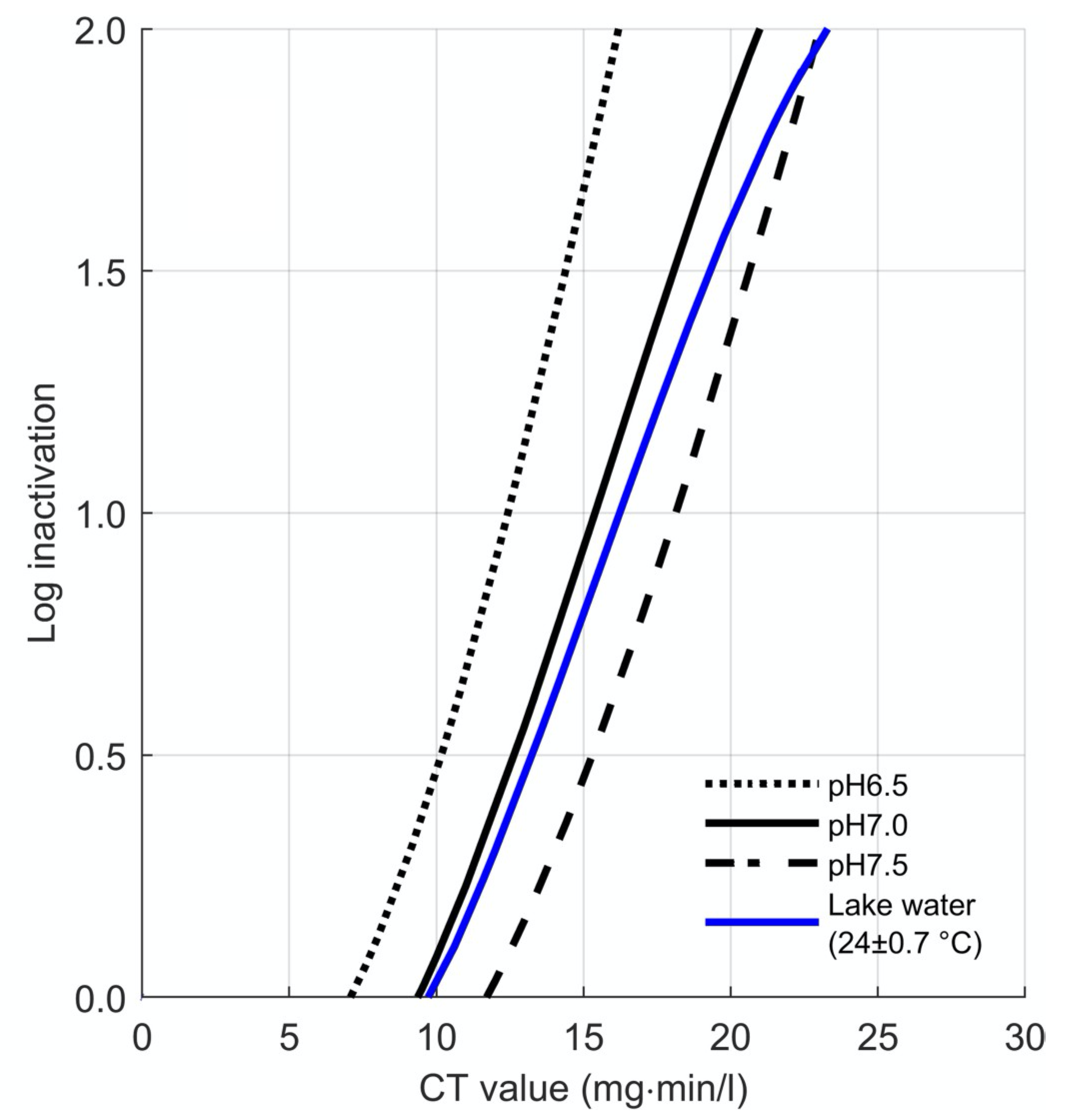
Schistosomiasis affects 240 million people around the globe. The disease is acquired when people come into contact with infested freshwater. The Schistosoma parasite goes through a developmental stage in freshwater snails and the infective free-swimming larvae (cercariae) emerge from snails to penetrate human skin. Communities that are most heavily infected often don’t have access to safe water and adequate sanitation. Preventing transmission through access to safe water is a key goal for schistosomiasis control.

One snail can release hundreds of cercariae each day. While reducing contact with potentially cercariae-infested water is crucial, people’s livelihoods and daily activities often rely on access to and contact with this water. As infection requires cercariae to penetrate skin, infection can be reduced through inactivating or killing cercariae before contacting water. Cercariae do not eat during this stage of their life and they only live 48 hours. Water can therefore be left for 2 days before use and cercariae will no longer be viable. Water can also be heated, filtered or exposed to UV (i.e. sunlight) to eliminate cercariae.

A recent study examined the effectiveness of chlorine in killing cercariae. Chlorine is frequently used to kill pathogens, such as Salmonella typhi, Vibrio cholerae, through oxidation that destroys cell walls. Although previous studies found that chlorine can kill cercariae, the concentration and duration of treatment is not well known. Braun and colleagues tested the impact of different of water conditions (pH and temperature) and water sources (bottled water and lake water) on the the ‘CT’ value. The ‘CT’ value is a standard measure that indicates an organism’s sensitivity to chlorine. It is dependent on the residual chlorine concentration (C) and contact time (T), with higher values indicate higher tolerance to chlorine.
To test the impact of pH and temperature, 100 lab-reared Schistostoma mansoni cercaria were exposed to water with different combinations of pH and temperature. For every 5 minutes up to 45 minutes, the number of live and dead cercariae were counted under a stereo microscope. The authors found that contact time, rather than dose of chlorine, was a more important factor in killing cercariae. Higher temperatures and more acidic conditions lead to faster inactivation.

In Tanzania, the team also collected cercariae and freshwater from Lake Victoria to test chlorination effects in the field. They found very similar inactivation results compared to lab findings (see blue line above). All of the experiments used cercariae that were less than 1.5 hours old. Older cercariae would need even less chlorine.
While this study shows that chlorine provides a useful option for water treatment and could potentially reduce schistosomiasis transmission, it cannot be used in isolation. Regular treatment with praziquantel, snail control and improved sanitation are all integral parts of the sustainable control and elimination of schistosomiasis as a public health problem.

Comments